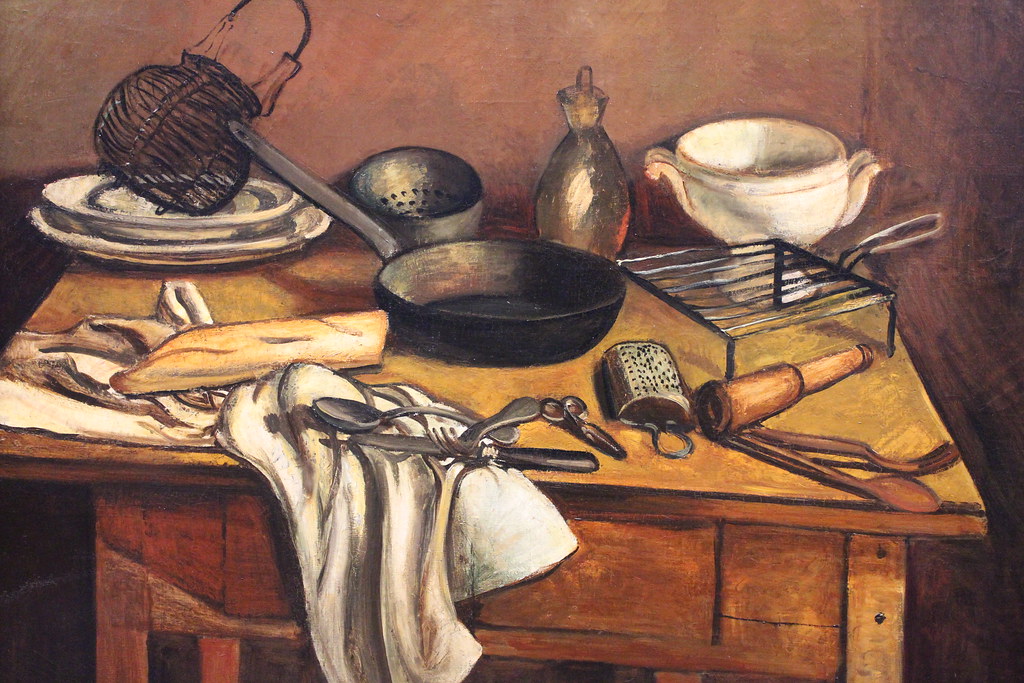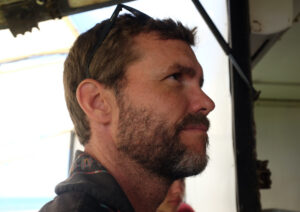My dad visited me over Thanksgiving and helped me build a table. I intend it to be the penultimate table upon which I regularly eat meals—the last one before I partake of the eternal feast, the marriage supper of the Lamb. At least, that’s the hope.
We’d gotten the thing constructed, and all that remained was the final smoothing of the top and applying the finish. But my dad had to fly home to Florida, leaving only me, a small arsenal of handplanes, a scraper, some sand paper, and a streak of perfectionism. In other words, I was doomed.
He and I are a good team. I’m pretty good with hand tools and aesthetics, and though my dad is no slouch in those areas, his greatest strength is getting things done. It’s easy for me to spend half a day making a new handle for the mortise chisel. When a hunk of wood on one of the legs blew out, I fretted and tried to imagine all manner of complex repairs. All he said was, “get the glue.”
The smoothing of the top would have gone better if all the wood grain ran the same direction. There are places in the world where boards are actually like this, but here in the American West, where hardwoods are scarce, we take what we can get, and what I got were three oak boards with some pretty squirrelly grain—grain that runs every which way. This is a problem because a hand plane smooths a board by going the direction of the grain, like petting a cat. Go the wrong way, and wood tears out. The cat gets upset.
Sure, I could have used sandpaper, but I didn’t want to. Like I said, I was doomed.
About three-quarters into the smoothing I was chasing grain direction like a detective, drawing arrows on the top, sneaking up sideways on swirling spots, resorting to the scraper and sandpaper in extreme cases (there were several). Steadily, I was actually shrinking the problem areas, but it was taking more and more time. Like Zeno’s paradox, I was never going to reach zero, and my family longed to sit and eat. So I called it good and applied the finish.
If you come to my house today and look at the table top, you’ll see it’s mostly smooth. You’ll also see tear out, and even some gouging where I misjudged the grain. I regularly run my fingers over it, detecting sharpness in corners I should have rounded more and spots that would have benefited from more scraping. The table is a record of those failures and will be for as long as I live.
And yet, it is remarkably successful as a table. We have eaten several meals on it already and nothing slid off the edge! No plates fell through a hole! We did a puzzle on it—no splinters! It’s even sturdy enough to dance on, as my college roommate used to do on our dorm room coffee table. In other words, my failures do not hinder, even a little bit, the table’s tableness.
It’s a new year, and many of us are thinking about self-improvement. This is a wonderful thing to do. We all need a bit of a tune-up now and then. But as we make our resolutions and focus on ourselves, it’s worth considering the parable of my table.
We can work on ourselves forever. There are always parts of us to improve, and if we can’t think of any, just scroll through your news feed and behold all the articles about self-improvement. But maybe this working on ourselves is a distraction. Maybe we are already, in a way that is more than adequate, who we are created to be.
A long table needs four legs to work well. Maybe you feel like you’re short one leg. Then, by all means, add it! Pull out the tools, call your dad—or someone—and do the work! But don’t let the endless process of self-improvement distract you from being who you are, which is someone who loves and enjoys God and is a gift to those around you.
Now I’m beginning to see how my table of imperfection is a picture of the Final Table. The marriage supper of the Lamb is not about ultimate perfection but a rest from perfection. We are not welcomed because we are flawless. We are welcomed because we are loved, and Love, more than anything, longs to sit and eat.
Image Credit: André Derain, “La Table de cuisine”(1922-1925) via Musee de l’Orangerie





1 comment
Art Kusserow
That was a special reflection, and I thank you for it. My dad was a carpenter, so your metaphor was especially apt for me. And as you suggested, relentless pursuit of (unattainable) perfection distracts us from the foundational unconditional acceptance of God’s love.
Comments are closed.